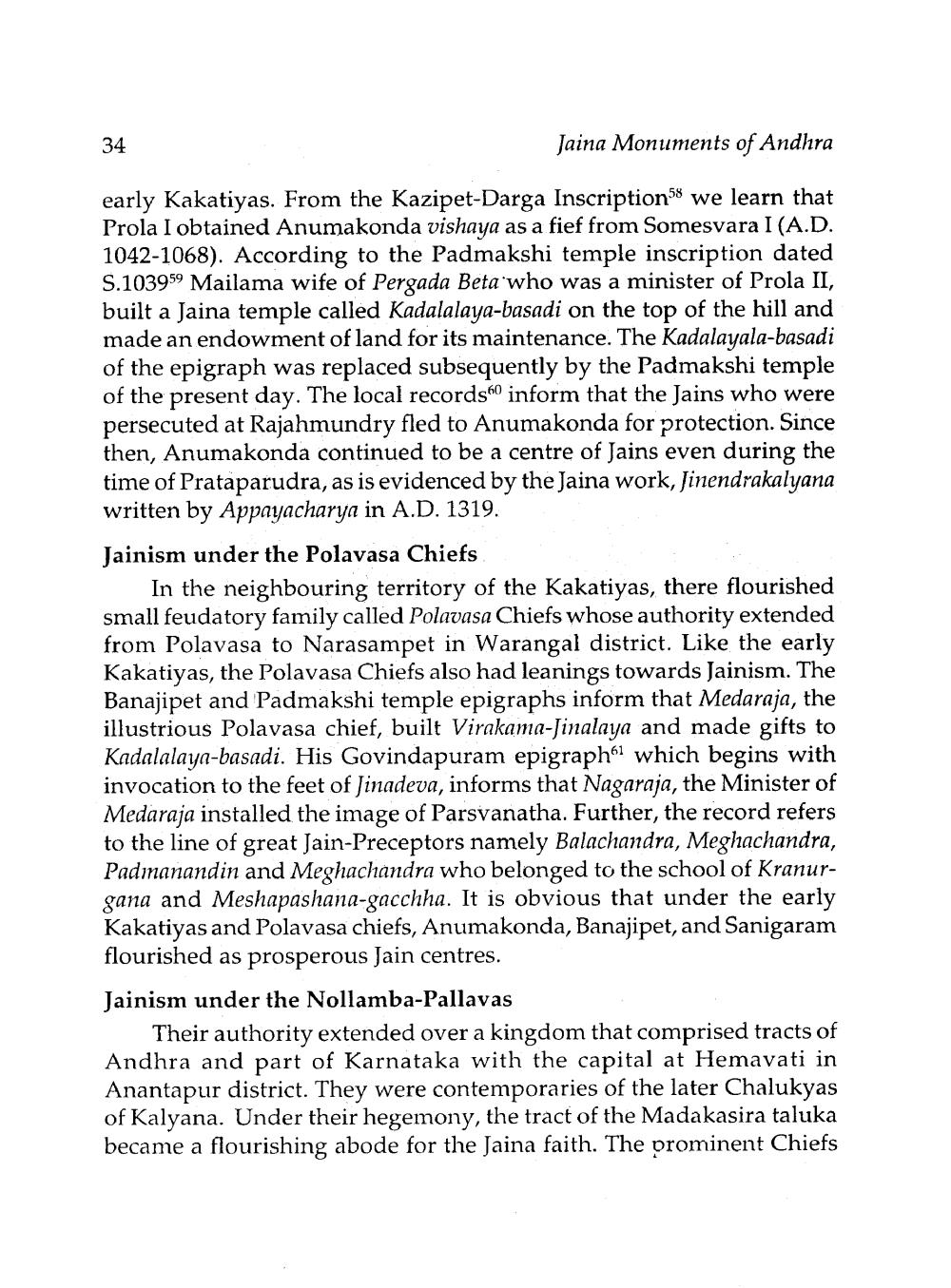________________
34
Jaina Monuments of Andhra
early Kakatiyas. From the Kazipet-Darga Inscription58 we learn that Prola I obtained Anumakonda vishaya as a fief from Somesvara I (A.D. 1042-1068). According to the Padmakshi temple inscription dated S.103959 Mailama wife of Pergada Beta who was a minister of Prola II, built a Jaina temple called Kadalalaya-basadi on the top of the hill and made an endowment of land for its maintenance. The Kadalayala-basadi of the epigraph was replaced subsequently by the Padmakshi temple of the present day. The local recordsho inform that the Jains who were persecuted at Rajahmundry fled to Anumakonda for protection. Since then, Anumakonda continued to be a centre of Jains even during the time of Prataparudra, as is evidenced by the Jaina work, Jinendrakalyana written by Appayacharya in A.D. 1319. Jainism under the Polavasa Chiefs
In the neighbouring territory of the Kakatiyas, there flourished small feudatory family called Polavasa Chiefs whose authority extended from Polavasa to Narasampet in Warangal district. Like the early Kakatiyas, the Polavasa Chiefs also had leanings towards Jainism. The Banajipet and Padmakshi temple epigraphs inform that Medaraja, the illustrious Polavasa chief, built Virakama-Jinalaya and made gifts to Kadalalaya-basadi. His Govindapuram epigraph which begins with invocation to the feet of Jinadeva, informs that Nagaraja, the Minister of Medaraja installed the image of Parsvanatha. Further, the record refers to the line of great Jain-Preceptors namely Balachandra, Meghachandra, Padmanandin and Meghachandra who belonged to the school of Kranurgana and Meshapashana-gacchha. It is obvious that under the early Kakatiyas and Polavasa chiefs, Anumakonda, Banajipet, and Sanigaram flourished as prosperous Jain centres.
Jainism under the Nollamba-Pallavas
Their authority extended over a kingdom that comprised tracts of Andhra and part of Karnataka with the capital at Hemavati in Anantapur district. They were contemporaries of the later Chalukyas of Kalyana. Under their hegemony, the tract of the Madakasira taluka became a flourishing abode for the Jaina faith. The prominent Chiefs




